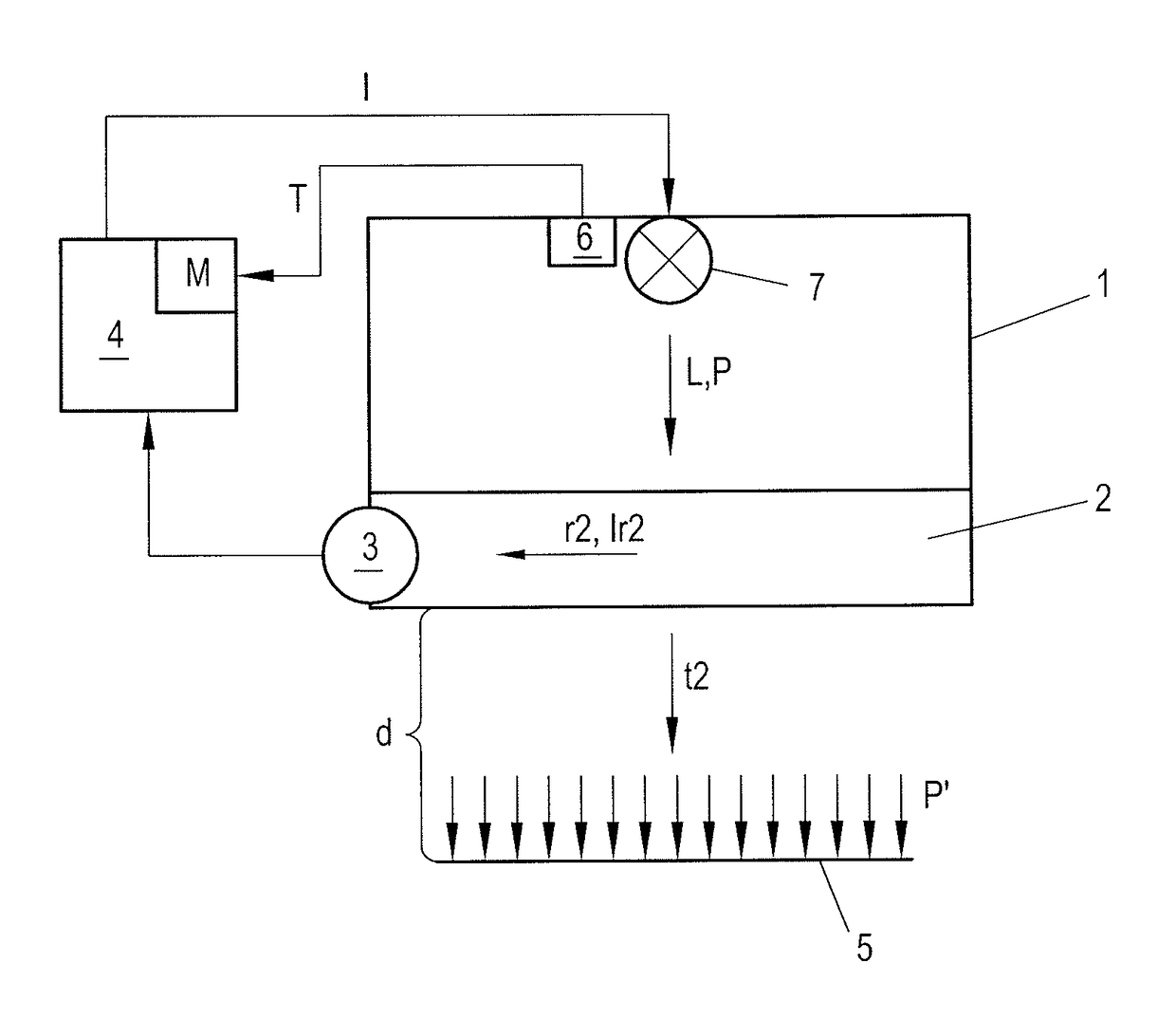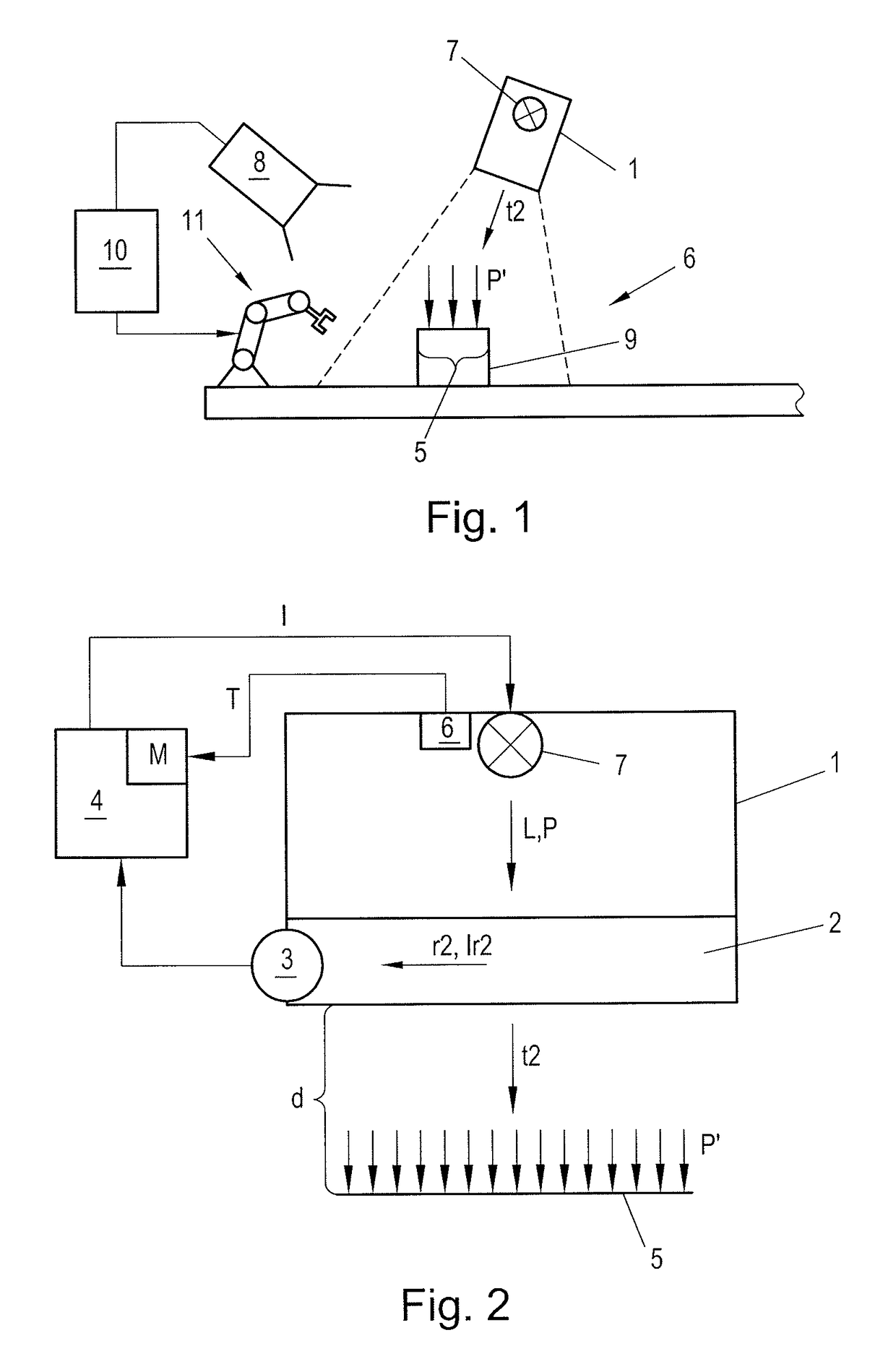Lighting apparatus with adjustable irradiance
a technology of light emitting apparatus and irradiance, which is applied in the direction of electrical apparatus, instruments, image data processing, etc., can solve the problems of inability to completely eliminate the fluctuation of radiant power, the irradiance emitted is sensitively adjusted, and the radiant power is subject to significant fluctuations
- Summary
- Abstract
- Description
- Claims
- Application Information
AI Technical Summary
Benefits of technology
Problems solved by technology
Method used
Image
Examples
Embodiment Construction
[0012]The problem addressed by the present invention is that of indicating a lighting apparatus for a machine vision application which permits a precise adjustment of the irradiance emitted by the lighting apparatus in an illuminated area as a function of the working distance.
[0013]This problem is solved in that a transmitted component of a light which is emitted by a light source and which insides onto an optical covering in the lighting apparatus is transmitted through the optical covering, and a reflected component of the incident light is reflected in the optical covering. The intensity of the reflected component in the optical covering is detected by a light sensor. Furthermore, it is possible to implement an arrangement of the lighting apparatus and a control unit, wherein the control unit is connected to the light sensor and the light source, and it is configured such that, based on the intensity of the reflected component, the radiant power of the light source can be regulat...
PUM
 Login to View More
Login to View More Abstract
Description
Claims
Application Information
 Login to View More
Login to View More - R&D
- Intellectual Property
- Life Sciences
- Materials
- Tech Scout
- Unparalleled Data Quality
- Higher Quality Content
- 60% Fewer Hallucinations
Browse by: Latest US Patents, China's latest patents, Technical Efficacy Thesaurus, Application Domain, Technology Topic, Popular Technical Reports.
© 2025 PatSnap. All rights reserved.Legal|Privacy policy|Modern Slavery Act Transparency Statement|Sitemap|About US| Contact US: help@patsnap.com



